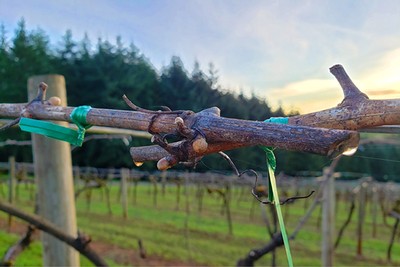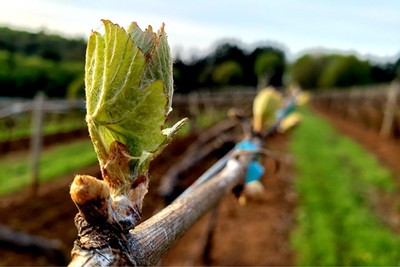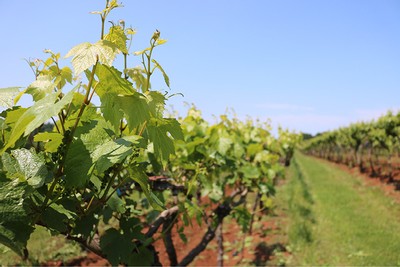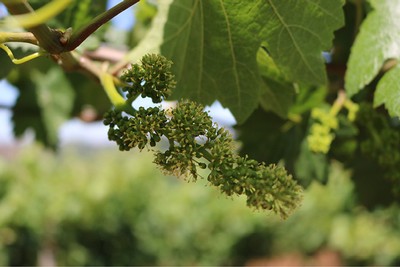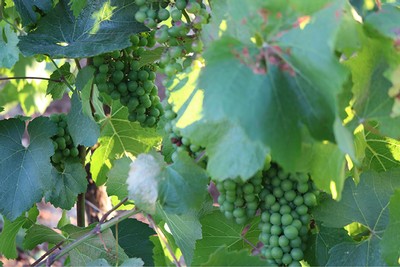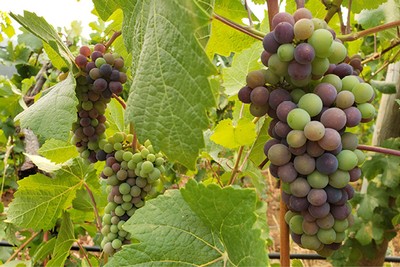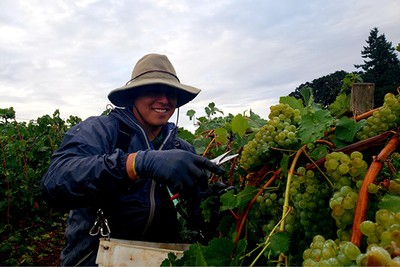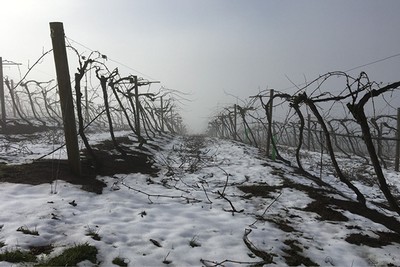Stages in the Vines
Spring and summer are exciting times in the vineyard. The vines come back to life from their winter sleep, becoming lush and brilliant green as the temperature warms and the clusters develop into beautiful wine grapes. Each step in the growing process (detailed below) is important to the development of the clusters and hand-crafting quality wines.
Weeping:
As temperatures warm and the ground temperature reaches 50 degrees, stored starch in the vine turns into sugar, making sap. The sap moves through the vine and begins to escape from the open pruning cuts, creating “teardrops” of sap all along the vines. When vines begin to “weep” it is a sign that the growing process has begun (Indiana Uplands Wine Trail).
Budbreak:
Buds begin to form along the arms of the vine. These buds are small, fuzzy and brown at first, but as the temperature warms, they break open revealing a bright green shoot. Each shoot grows rapidly, making the vineyard hillsides a brilliant green color. The more leaves present on the vine soaking up the sun allows for more photosynthesis to occur, allowing the shoots to develop faster. Leaf development occurs simultaneously, leaves unfolding one by one as the shoot grows taller.
First Grooming:
Once the vines become dense with greenery, our vineyard crew will make their way through the vineyard to trim excess canes. Grooming excess canes helps regulate the amount of vegetation present on the vine. If there is too much vegetation, the nutrients from the vine are more thinly distributed, producing grapes that lack complexity and concentration of flavors. This is where the saying “quality over quantity” rings true.
Flowering:
Along with the large, wide leaves now on the vine, small clusters can be seen. Shortly thereafter, with assistance from the sun, tiny flowers spring to life on the cluster. As these flowers bloom, self-pollinate and lose their caps, small grape clusters will begin to form.
Berry Set:
Tiny green berries are now visible on the vines. The grapes are a bright green and about the size of a pencil eraser. They are also very hard and dense as they are mostly comprised of acid and short tannins. At this stage, almost all grape varietals look the same. The grapes clusters will continue to grow and develop for the next month or two.
Veraison:
Veraison is the second and most noticeable stage of grape ripening. During veraison, the grapes experience a big decrease in acid levels and a big increase in sugar levels. As they ripen, the grapes change color and our vineyard crew will once again prune the vine canopy and excess clusters to ensure the remaining clusters continue ripening well. Our winemaking team will then test the sugar level and tannin structure of the grapes to determine if the clusters are ready to be harvested.
Harvest:
Once our Winemaker decides the grapes are ready to be harvested, our expanded vineyard crews get to work. Wine grape varietals are harvested at different times depending on the type of grape, elevation at which they are grown and the style of wine being made. Grapes used for wines with brighter acidity, such as Brut or Pinot Gris, are harvested earlier when acid levels in the grapes are still high. Grapes for softer style wines, like Pinot Noir, are harvested later once acid levels in the grapes have had time to decrease and sugar levels have increased.
Dormancy:
When harvest is over, the work in the vineyards is not done. The winter months are an important part of the vineyard lifecycle too. After the vines enter a dormancy phase, our vineyard crew will carefully prune the vines to prepare for the next growing cycle. The clippings are eventually ground into mulch and recycled back to the earth. When the vines awaken in the spring, these thoughtful cuts will inspire growth in all the right places leading to better yields and increased air flow. In early spring, the vineyard team will begin tying the vine canes to our trellises to support new growth for the new vintage year. And thus completes the continual cycle in the vineyard.
